
Arch
443/646: Architecture and Film
Winter 2014
The Science of Sleep (2006)

 |
Arch
443/646: Architecture and Film The Science of Sleep (2006) |
 |
Discussion Questions:
Remember, your images are ABOVE your name.
Please answer the questions below. Use paragraph form. Submit to LEARN. THINGS TO KEEP IN MIND WHEN ANSWERING THESE QUESTIONS: I am looking for general observations about the film and the relationship to any aspect of f/x. Although the questions are specific to The Science of Sleep, feel free to reference any of the other movies that we have seen this term or that you think might be appropriate. |
x |
|||||
| 1. | 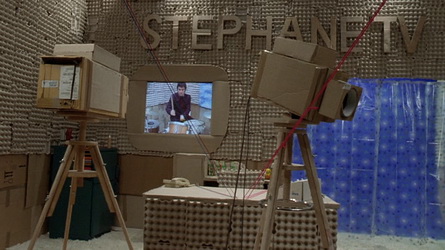 |
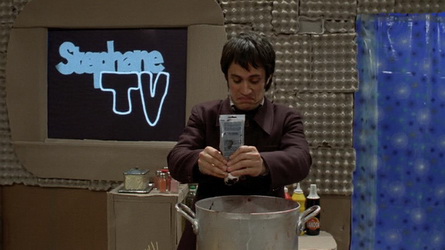 |
 |
||
Hillary Chang I think this introductory sequence really helps viewers understand Stephane's mentality and actions throughout the film in conjunction with the way he sees reality vs. dreams. Stephane uses the introduction sequence as a way to explain how he formulates his dreams, using parts of reality as their base. As viewers and people, we can already understand how dreams are made, however, a key feature of this film is how Stephane's dreams and reality shift seamlessly from one to another. In this sense, the introductory scene becomes necessary - it introduces viewers to the intensity at which his dreams influence his reality and vice versa, and to the type of prop details and cinematographically details the director uses to indicate dream vs reality. I feel like instead of it taking away from the challenge, it only helps ease viewers into understanding the details that show Stephane's shift from reality to dream. For example, when Stephanie and Stephane pour water onto people from her balcony, the water comes out of the tap as cellophane instead of water, but falls onto the street as actual water. Without the introduction sequence, viewers would have a much more difficult time understanding why cellophane is coming out of a tap; whereas with the introduction sequence, we understand it as Stephane dreaming that his relationship with Stephanie is healthy and that she's fully seeing what he's seeing/dreaming.
|
|||||
| 2. | 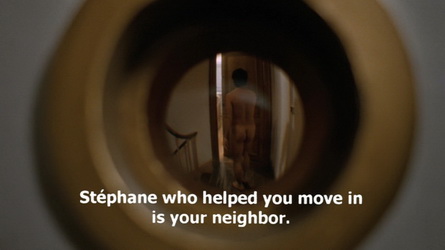 |
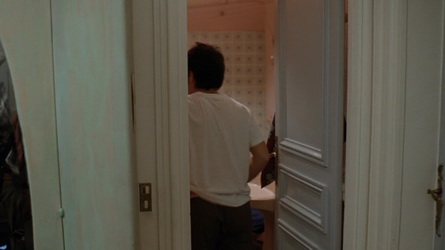 |
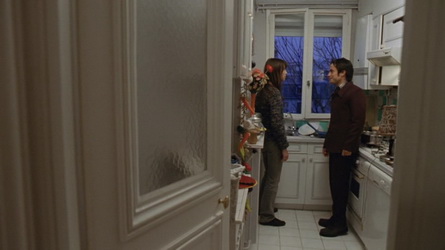 |
||
Patrick Cheung The use of a threshold as a transition from scene to scene as well as a frame for the action/plot of the film distances the viewer from Stephane. Stephane is an odd character, a man with a loose grasp on reality and a hidden struggle with his emotions regarding his father's death that alters the way he views the people around him and how he chooses to handle his life. He found comfort in his father, though with his father gone, he finds it difficult to open up to anyone else. He chooses to escape and live in dreams, understanding the world through dreaming and sleeping. The viewer is often “outside” of the scene, beyond the threshold. The viewer is rarely let into a scene with Stephane in it, unless it's in a dream sequence; it is in the dream sequences that he chooses to let the viewer into his life, showing us his thoughts, feelings, and understandings of the things that happen to him. When a scene switches, Stephane is either entering another threshold (thus leaving us “outside” again), or switching places with the viewer, the viewer and Stephane are rarely in the same scene. Just as Stephane puts up a barrier
|
|||||
| 3. | 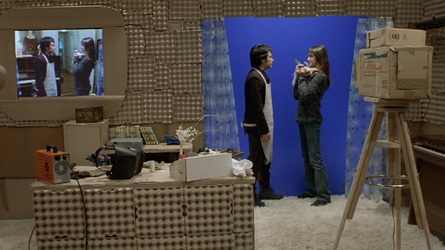 |
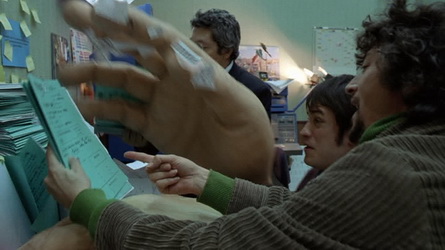 |
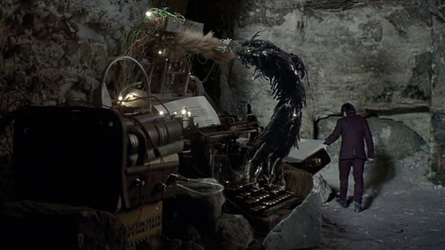 |
||
Wesley Chu Throughout Gondry’s “The Science of Sleep”, the line between reality and dreams becomes blurred as the film goes on. The level of self-awareness the audience is given juxtaposed with the audience’s inferred position is directly correlated to this theme. In the above three scenes, each one marks a different point of view of the audience. In the first scene, Stephane is on the set of his personal television show with Stephanie. Through the onset monitor, we get a direct comparison of the live view on set and the feed that would be presented to an audience through a screen. Because of this “picture in picture” style juxtaposition, it makes the audience hyper-aware of the fact that the outer picture is reality, as we can see the inner picture that would represent the fantasy Stephane has of actually being broadcasted on television. In the second scene, Stephane has fantasized that he has grown giant hands, and the audience is put right there in the room with the characters as this plays out. It is obviously a fantasy due to the absurdity of the situation, coming straight from a jump cut from before when his hands were normal. This sudden change in continuity is jarring for the audience and immediately snaps them out of the reality that was present, bringing attention to itself as they watch. All of this is aided by the chaotic camera movement and editing. In the third scene, the audience is placed right into his head in a dream, with his thoughts being typed out on a whimsical typewriter in a cave. There is no suggestion that this is reality, but only how he imagines his inner thoughts to be when he is asleep. Once again the audience has a view of this process, but due to the obvious nature of the scene itself, they are never led to believe that this could possibly be reality. This is early in the film when the line between reality and dreams is quite apparent, before it escalates.
|
|||||
| x | 4. | 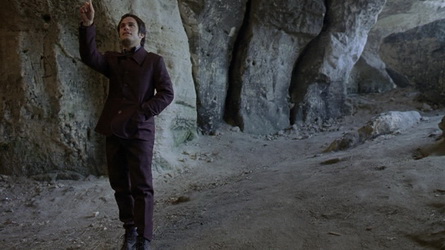 |
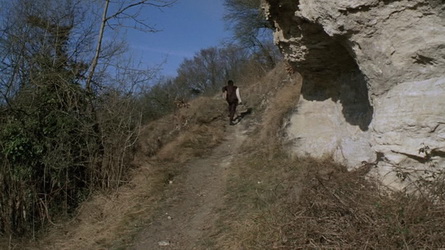 |
 |
x |
Charlie Gao
|
|||||
| 5. | 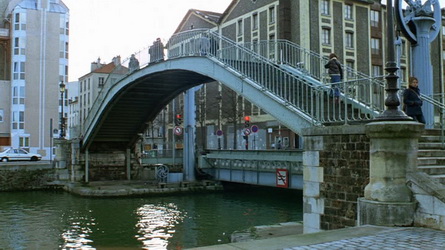 |
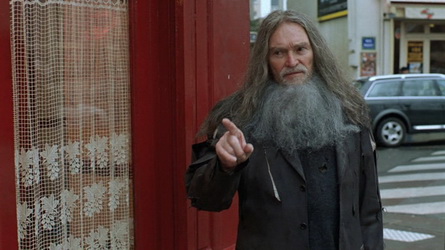 |
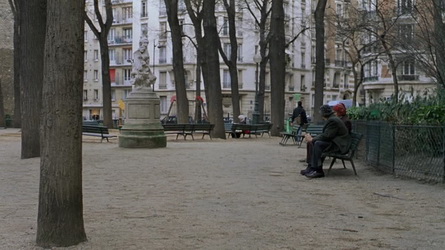 |
||
Maighdlyn Hadley The city scenes in Michel Gondry’s The Science of Sleep base their action in reality for a variety of reasons, both to conform to the director’s creative vision and due to practical constraints. Gondry’s dubious protagonist Stéphane Miroux finds refuge in sleep and his imagination, which happen either in his home or the dull office at which he works. The outside world is seen as a mundane, cold, flatly lit one, divorced from the rich, textural world in his head. The streets and parks of Paris are where he has to be alert, interact with strangers, and navigate difficult situations. It is where he has to deal with the death of his father, his mourning mother, his awkward romantic missteps with Stephanie. His world of imagination is insular and protective, just like the indoors. This makes “reality” in the film a cold wake-up call, a dull alternative for someone like Stéphane. Through his ability to access the fantastical world of his mind, he seems to render the subtle, everyday magic of the real world pale in comparison. However, there are also more practical reasons to limit the more fantastical scenes to the indoors in The Science of Sleep. In the behind-the-scenes video, Michel Gondry and his team show the grueling labour and arts-andcraft creativity that goes into the elaborate handcrafted special effects that provide the audience insight into Stéphane’s imagination. While this sort of control and attention to detail is possible in a synthetic environment (i.e. the ski slope mountain set in a barn), it is impossible to augment the settings in such a heavy-handed way in public settings. For this reason, it was a necessity for the scenes based in real-life Paris to look and act like real-life Paris.
|
|||||
| 6. | 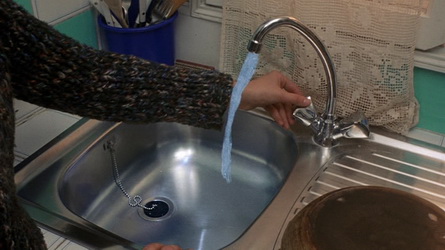 |
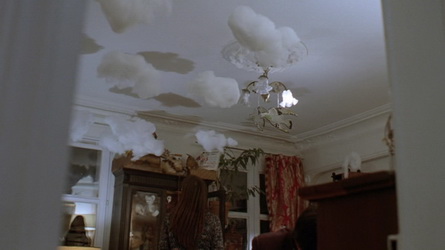 |
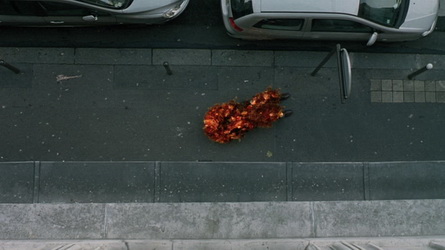 |
||
Dan Kwak Not only Stephane constantly confuses the scenes of reality with that of his dreams; Gondry also imposes this confusion on the audience by substituting Stephane’s hallucinated objects with only a limited part of the reality. For example, the audience is certain of the reality of the scenes above; yet, only the water from the tap, the floating clouds of cotton, or the burning man with red paper while the rest of the setting remains realistic, brings the audience to wonder. Thus it becomes very difficult for the audience to grasp the clear border between reality and dreams by this constant, abrupt introduction of Stephane’s dreamy creations. Throughout the development of this blurring mediation between fabrications of dreams and the reality, the audience awkwardly establishes a rule to define this confusing vision. Stephane is the author of these fabrications, and at a certain juxtaposition of the narrative to Stephane’s momentary emotions, these fabrications occur. For example, the scenes above illustrate the moments when Stephane joyfully engages with Stephanie – here, Stephane is happy. This emotion is carried onto the scenes as a partial fabrication. It is as if the audience is forced onto Stephane’s emotional burst of these creations at spontaneous points of the narrative. Stephane and Stephanie excitedly run over to the kitchen, and the water flows but in paper-mesh. The clouds of cotton, which Stephane tries impress Stephanie with, float as he keys the proper notes on the piano. The mischievous act that carries a sense of thrill depicts the man burning in paper. (In reality, on the other hand, the man is not really burning but perhaps angry at the thrown cigarette?) Perhaps Gondry tries to amplify or exaggerate the expression of Stephane’s emotions – whether happy or sad – by the insertion of Stephane’s fabrications in the scenes. The rule to the appearance of these fabrications is so ambivalent, which baffles the audience and thus is powerlessly carried onto Stephane’s dreamy scenes. Gondry achieves this not only by the appearance of fabrications but accurately switching the perspectives at proper nodes. Whose eyes is the audience looking at these fabrications? This is, again, blurring as the perspective constantly changes from Stephane’s to a third-person point of view and vice versa. For example, the audience sees both Stephane and Stephanie dash into the kitchen. Upon the water-tap scene, suddenly the audience sees through the eyes of Stephane; which swiftly returns to the third-person point of view after. This sneaky trick is so flawlessly rendered that the audience can hardly discern while their fascination is fixated on the paper-water. Gondry, by the implication of the fabrications and by the timed change of perspective, illustrates the narrative in Stephane’s emotional idleness, or the state of dreaming the reality. Hence, this blurring transition then not only implies a confused character, Stephane, but also the audience altogether.
|
|||||
7. |
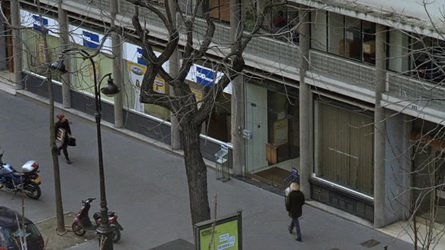 |
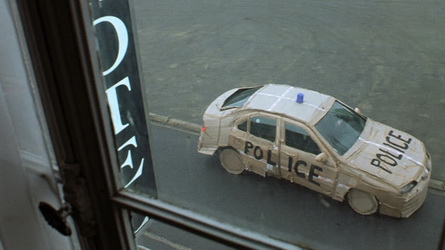 |
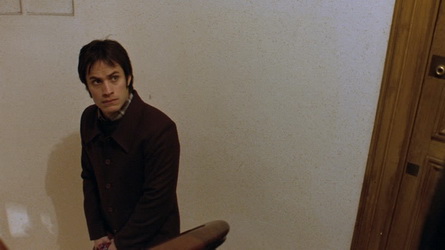 |
||
Milos Mladenovic The high angle shot is a common technique in film often used to make a moment more dramatic or if there is an interaction between characters at different levels. Within the Science of Sleep, it is particularly effective in enhancing the overall dream-like quality of many of the scenes and events depicted. By using high angle shots, it often gives the impression that Stephane is being "swallowed up" by his settings - the extreme high angle makes him appear almost insignificant to his overpowering surroundings. It suits the overarching theme of a blurring between Stephane's fantasies and his dreams, in which he often seems to be "lost" or totally immersed in his dream world. The high angle shots are at times used strategically, such as in the first shot above, to make him seem vulnerable, powerless, and even in some instances somewhat naive. Here, Stephane is running to work on his first day - he is late and runs frantically like a small fish in a large ocean. In the middle shot, the high angle is from Stephane's point of view, when he has no clear route of escape from the police that are apparently after him. The high angle makes the moment more dramatic and nods at the possibility that, because Stephane is dreaming, everything is in his mind exaggerated beyond reality. Likewise, in the third still, when Stephanie confronts Stephane about his erratic behavior and his inability to allow her to connect with him, the moment becomes more dramatic when she views him from high above. In this case, additionally, the high angle shot may also have simply been a necessity due to the fact that the movie was filmed within a narrow staircase of a real Parision residential apartment block and so presented substantial logistical and technical challenges to the Director and crew for scenes within the stairwell. Further, the reading of the high angle shots is influenced largely by the fact that most are taken from the point of view of a character in the film. Traditionally, high angle shots are usually privileged only to the viewer - an extraordinary view unattainable to the characters within the scene - making it seem as though the characters are confined within the world of the camera while the viewer is separate and omniscient. However, in this film, the high angle shot is almost always from the point of view of a character in the film (i.e., in the second still, it is Stephane's, in the third, it is Stephanie's), pulling the viewer into the setting along with the characters. As a viewer, you enter Stephane's reality and his dreams and feel powerless to them, just like the characters. In this way the high angle shots propel the narrative of the film and assist in transporting the viewer into Stephane's dreams and even at times blurring our ability to discern when he is awake or dreaming.
|
|||||
| 8. | 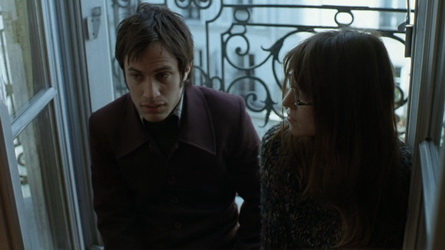 |
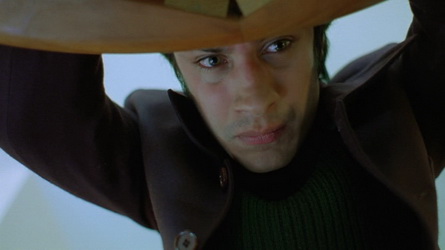 |
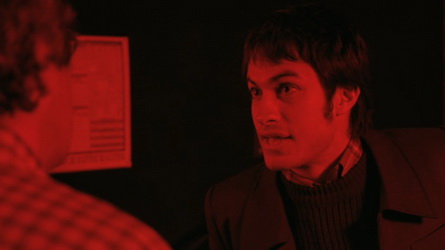 |
||
Arturo Rivera
|
|||||
| 9. | 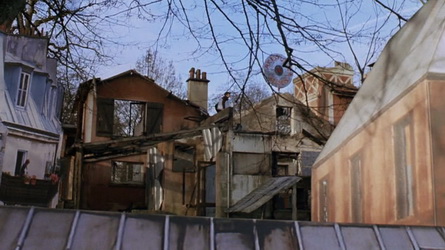 |
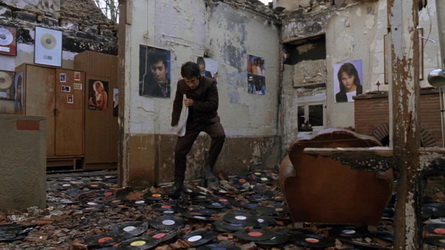 |
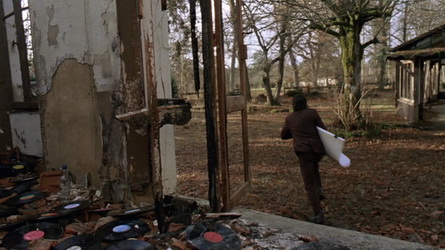 |
||
Morgan O'Reilly The dream sequence depicted in these stills is propelled by the repercussions of a previous dream, which occurs when the main character, Stéphane falls asleep in his bathtub. Prior to hopping in the tub Stéphane had been enjoying time with his new neighbour Stéphanie and beginning to develop romantic feelings for her. In this dream he writes a letter to Stéphanie; an apology for the lies he’s told, written in broken French that ineloquently ends with a request for Stéphanie’s friend Zoe’s phone number. He wakes to find that his tub water is freezing and that he has actually written this letter to Stéphanie and put it under her door. In a panic, Stéphane uses a wire hanger to pull the letter back out from under the door. He then proceeds to type a new letter on his typewriter in bed, at which point the dream sequence featured in these stills begins. Suddenly the typewriter is being operated by a strange mechanical creature with long spiderlike legs. The typewriter has grown to an enormous size and is located in a cave where Stéphane dictates his letter. During this transition, the logic of the dictation disintegrates, presumably indicating that Stéphane is falling asleep. When complete, Stéphane runs from the cave holding the over-scaled letter, which barely fits under his arm. The film then cuts to Stéphane’s new place of work, where his coworkers complain about his unexplained absence. It’s made clear that Stéphane has overslept. He is then shown gripping the letter while swimming through the sky of a fluctuating cardboard model of the city. He lands on the roof of an abandoned dilapidated house. On top of the house a rotating sign features a turtle and the word ‘Aristotle’, which refers back to the lie told earlier by Stéphanie’s friend Zoe. The women led Stéphane to believe that they held jobs as creative executives at a company called ‘Aristotle’. The walls of the house are littered with posters of musicians, while the floors are covered with leaves and records. Stéphane searches for Stéphanie and Zoe, before losing his temper, stomping on the record-covered floor and running from the house into the countryside. While this dream is initially propelled by the anxiety created by the sleep-written apology, it proceeds to express all of the turmoil present in Stéphane’s life. In the house visited in Stéphane’s dream, the musical posters on the walls and records on the floor indicate that it is the imagined location of the made-up Aristotle record company. Its state of abandonment however, signifies that this company was a lie that Stéphane is now aware of. While this is the obvious interpretation, the choice to use an abandoned house as the location of the entertainment company, rather than some kind of office space is significant. The viewer is left to wonder if this house is that of Stéphane’s childhood or the home he left behind in Mexico. While this is never explained in the film, in dream interpretation the house is a common symbol. According to Andrew Levitt’s book ‘Inner Studio,’ “The house can symbolize the state of the whole psyche, while the rooms that appear in a dream are parts of yourself that make up the whole of the psyche.”i Furthermore, Levitt states that “The house in your dream will symbolize the way you are living your life.” From this standpoint, the state of this house strongly represents the displacement being experienced by Stéphane, both physically and mentally. Perhaps Stéphane feels left behind by his recently deceased father. Stéphane is a peculiar character who has trouble deciphering between his dreams and reality. Through a few recollections featured in the film, the viewer can gather that Stéphane’s father was similarly imaginative. With the death of his father Stéphane may have lost his physical house but more importantly he lost the home which existed with the one person who understood him. In his new relationship with his neighbour Stéphanie, Stéphane might have hoped to find a soulful connection. He even states in the bar that Stéphanie reminds him of his father, however their relationship is undermined and hindered by the lies between them. While searching the house, Stéphane is infuriated by the lie told to him by Zoe and Stéphanie. Set within the abandoned house, this disproportionate anger can be interpreted to stem from a greater frustration with the dishonesty and upheaval in his life. He was drawn to Paris by his mother under the pretense that there would be a creative position waiting for him at a calendar design company. He arrived to find that this is not the case. Even Stéphanie, the one person with whom Stéphane thought he could find refuge from reality has misled him in some way. Stéphane flees the house through a back door, running into the countryside. This is disorienting because, upon arriving, the house looked to be located in a cityscape. Natural settings, particularly the cave seems to act as the backdrop for the deepest parts of Stéphane’s dreams. The cave also seems to be where Stéphane has control and is content. By running into this sudden landscape, it’s as though Stéphane is attempting to escape deeper into the dream and further away from reality. The settings of the dream sequences which make up a large portion of the film are chosen with the knowledge that they construct the inner workings of Stéphane’s mind. The settings which are not seen in Stéphane’s waking life, such as the house featured in these stills, are of particular interest because they develop Stéphane’s character beyond the immediate storyline. While the interpretation of the setting of this dream sequence is not prescribed, it is provoked giving depth to Stéphane’s psyche. i Levitt, Andrew. "The Symbolic House." The Inner Studio: A Designer's Guide to the Resources of the Psyche. Cambridge, Ont.: Riverside Architectural, 2007, 86.
|
|||||
| 10. | 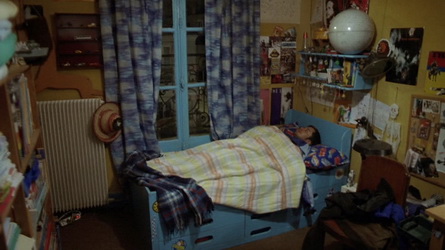 |
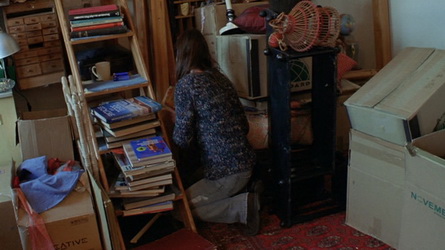 |
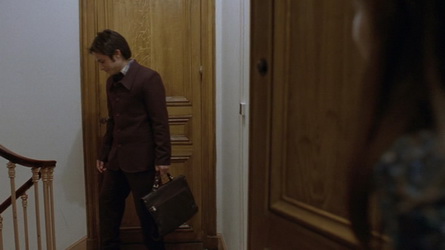 |
||
Patrick Rossiter The blurring between real life and dream states is an aspect of this story that, I believe, Gondry wanted to be seamless. Gondry did not want to produce the “typical” dream scenes as seen in other movies. The film is not necessarily a tribute to the dream life, as much as an examination of what happens when a dreamer cannot distinguish between his dreams and his so-called real life1. Much of the dream scenes were shot and produced prior to shooting the film with actors – Gondry apparently did this to save money and to avoid green screening actors in to scenes that they couldn’t really experience in the moment. The use of handmade models allowed for a DIY look, but of course filmed with technical perfection. The scaled down towns and imagery that Gondry produced served as a starting point to explain to the actors the dreamy world they would be immersed in as characters. The behind the scenes footage reveals an incredible amount about the production of these scenes and it is surprising to see high tech camera and lighting equipment being used like this in a garage somewhere in the French country side. I believe the juxtaposition of the real and dream states in the confines of the apartments worked very well within the story line and its delivery. His apartment became a place where anything could happen once he fell asleep. The tight quarters of the apartments lent themselves well to describing who Stephane is or was as a child. With regards to the decorations, the toys, the appliances, and the spaces in general – because the apartment was so small, the viewer has the chance to witness these elements as symbols of his character. This works very well to added character description when they pop up in his dreams. For example, the sound of his alarm clock being reinterpreted as a spinning siren mounted on a building in his dreams or his electric shaver which comes to life as a demented insect. We already are aware of these props because the apartment is so small and Gondry had taken the time to detail it so very well. When they seep into the dream world of Stephane it allows the detail of his character to be reinforced by this additional external information. The obscured relationship between reality and dream are so smooth the viewer may wonder if they missed something. Stephane’s transition from being in bed to being out in the real world is delivered in a seamless way. Reality shifts into the dreamlike smoothly and unknowingly as Gondry toys and dances with his protagonist’s imagination2. At one instance the viewer is led to assume that Stephane was able to dress himself without waking up. We never see him hop out of bed, we just see him active in his dream and then immediately active in his real world setting in his apartment building, engaging with people around him. The only indication he is still dreaming is that his words and actions seem to be slightly confused. Problems of tight set - Benefits of tight set – 1 “The Science of Sleep – The Evening Class Interview with Michel Gondry,” last modified August 26th, 2006, http://theeveningclass.blogspot.ca/2006/08/science-of-sleepthe-evening-class.html 2 “The Science of Sleep,” last modified May 25th, 2012, http://www.unsungfilms.com/5406/the-science-of-sleep/.
|
|||||
| 11. | 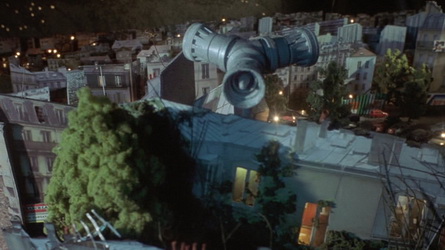 |
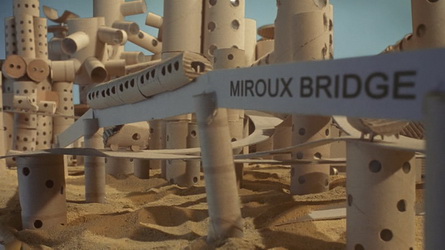 |
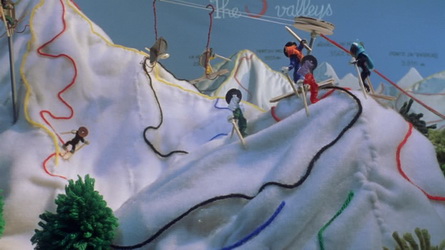 |
||
Simone Tchonova The science of sleep articulates a narrative between the juxtaposition of two realms, them being that of the sleeping and dreaming state versus the conscious/awake state. The director subtly informs the viewers of the change of realms through the use of material in each differentiating scene. "The sheer size too, the excessive abundance, scale, and exaggeration of dreams could be an infantile characteristic. The most ardent wish of children is to grow up and get as big a share of everything as the grown-ups; they are hard to satisfy; do not know the meaning of 'enough.'” -- Sigmund Freud, “The Interpretation of Dreams” In the beginning of the film we are introduced with the main character’s view on the dream state - that being that our dreams consist of any experiences throughout the day plus some past memories and current events. Essentially the dream state pertains and is influenced mainly by the dreamer’s perception of reality. We can then compare the dreamer to an artist by the definition that an artist expresses their perception of reality through their specific medium. During the dream state scenes, the materiality of the setting is composed of craft like materials. Some of these materials include cardboard cities, felt mountains, sewn fabric clay animation and anything else that one might have used as a child playing arts and crafts. In essence these materials suggest a self initiated craft and sort of expression of the realities being shown. The director has reinforced the idea that a dream is the makeup of an individuals impression of their current and . The dreamer is the creator of the scene and attitude within each dream. In this self crafted world Stephan plays the role he wishes he played in reality - the narcissistic Napoleon, righting the wrongs of his waking life and always getting the girl. The film depicts the notion that humans hide away in their dream state and are better able to express themselves this way. It would have been interesting if Gondry would have shown a way of finding our dreamworlds within our realities instead of showing the separation of the two. Stephan is manipulating animation motion graphics with craft material in a way of expressing himself. Dreams are merely an artistic expression of our own realities.
|
|||||
| 12. | 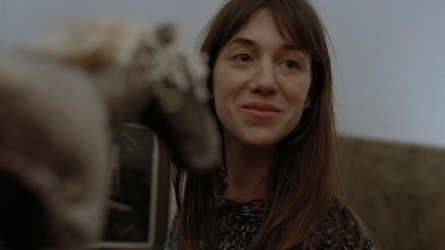 |
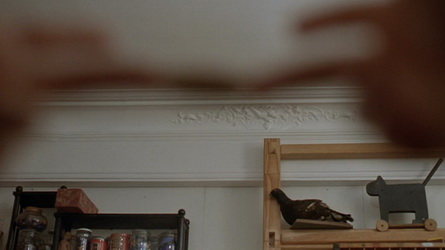 |
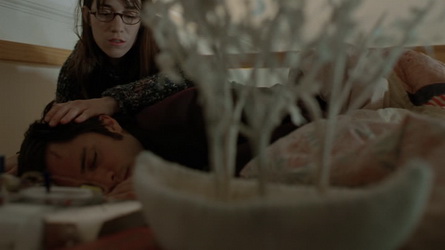 |
||
Yiming Wang
|
|||||
| 13. |  |
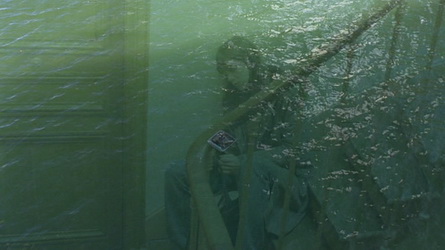 |
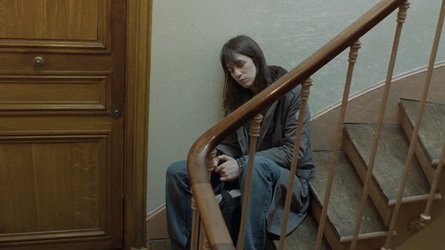 |
||
Victor Zagabe The cross dissolve is something tha tis used very sparingly in the movie because it represents a fragment of the movie which is not dream like at all in its nature. To allow the audience to understand how one situation may have a direct correlation to another one, which is to say that they both occur within the same reality, is something that was being conveyed in these scenes. This is to contrast the abrupt transitions, that occured when the protagonist’s mind changed from that of the real world, to that of his dream like state. The water turning into solids, being one example. There was no particular dissolve transition for that, only a quick transition from one frame to another that represented the idea of the shock of being thrown back and forth between these two worlds. It is a far more realistic approach to have the dream sequences end so abruptly, as it relates more to the human sentiment of waking from a very vivid dream, into a more stale reality.
|
|||||
| 14. | 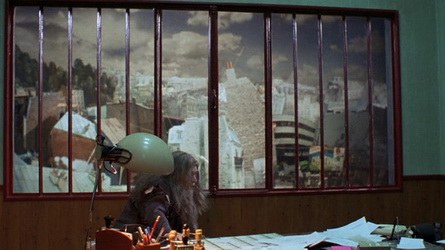 |
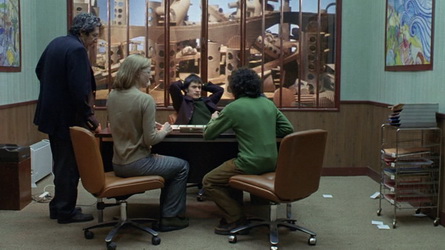 |
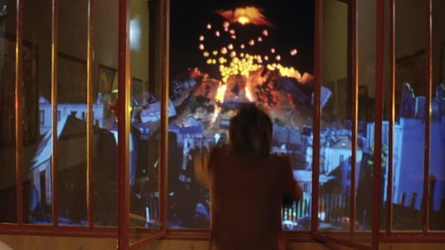 |
||
Kyle Jensen The effectiveness of projection method as a way to show the dream sequences in the movie were effective even with the low tech execution. It is the right special effect for this film as it allows actors to see the action of the dream in realtime, it allows actors to interact with the dream. Also, it is a dream and does not demand reality, making stop frame animation with hand built models a perfect representation ! of a dream. ! Most times the special effects in current movies involve green-screens to generate a similar effect as is seen in the movie as he slips into a daydream. In this film the use of an actual image projected in real time creates a dream space that the actors of the film are able to see and interact with in real time. This simplified technology actually helps this particular movie giving the benefit of creating a flow in the picture as well as allowing for more spontaneity on the set. I feel like a lot of freedom was given to the actors of this film to fill in the gaps in dialog with free flowing language that comes naturally as the relationships in the movie progresses and the actors become familiar with their roles. The fact that dreams are what are being projected allows the film maker freedom to create any imagined scene. There is no need for reality, meaning scale, atmosphere and physics don't need to be accurate. For instance, a city scape with simplified buildings and a volcano were seen in the dreams. The models used in the stop frame animation of the dream sequences consist of everyday materials. Anyone with some craft talent and time would be able to fabricate such models, but the amazing part is how many things move within the dream sequence itself. It would have been extremely difficult to move all portions of the model in order to capture the animation. This intricacy in the capturing of small details would have taken extreme attention to detail as all parts need to move at the right pace in order for the scene to appear believable to t!he viewer. As the projection happened in a window, the actors were able to fall through the window and into the dream, making for interesting transitions through consciousness. Similarly, the dreams are able to flow into the office space, in the case of the volcano simulated lava flew through the window. I feel its fairly similar to Stéphane’s brain perspective as seen multiple times in the movie. As himself who lives in his head, sees through his eyes, two portholes as well as seeing memories from the past. The idea of a window as a way to see into someones thoughts is used in multiple places in the movie. The cityscape projection was interesting as all of the buildings seemed to be moving almost like they were alive or blowing in a strong wind. I specifically enjoyed the scene where he was floating over the city with the flying buildings, as I think a flying dream is fairly common, allowing the viewer to relate. It confused me a little bit when they took the same scene and made the actor swimming through water, that was not as effective in my opinion. The scene with the tube city in the background was my favourite of the projections. I think the craft in the models were really what draw me into the dream more than what was happening in the foreground. I am amazed at what can be built using common materials. A low budget does not have to minimize creativity, and this scene really hit home as far as what would be needed to create such an interact animation. The volcano for me was not as effective. It really lost favour for me when the fake lava came flying through the window, it was simply too literal for a dream. Maybe if they had changed the speed of video making a slow motion event the action may have been believable but as it stands in the film for me was inadequate. Overall I feel like the projection method was well suited for this movie. It was a great tool in creating Stéphane’s dreams within reality and therefore making a daydream within everyday activities.
|
|||||
updated 25-Apr-2014 9:21 AM